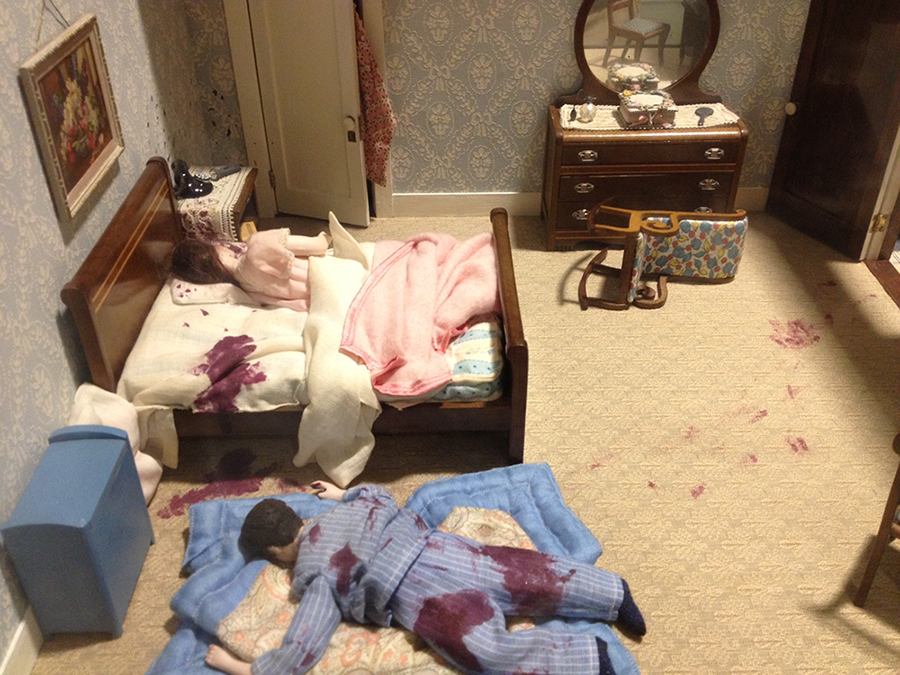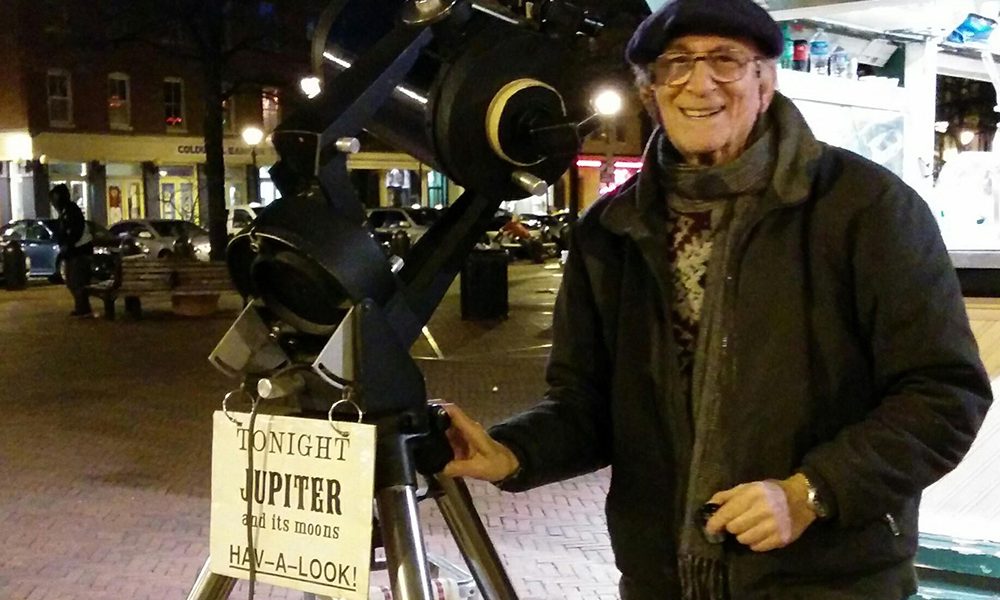News & Community
The Chatter: September 2016
Overheard from Herman Heyn, the Maryland State Medical Society, and Artscape.
Star Struck
St. Paul Street
July 9, 2016
“Now don’t accuse me of putting in a slide,” Herman Heyn cracks, adjusting his telescope and tripod in front of the Chipotle in Charles Village as a middle-school girl peers in.
“Oh wow!” she squeals, which, after the half-million “looks” Heyn figures he’s offered over the past three decades, still makes the 85-year-old, street-corner astronomy busker smile. “The rings are so bright!”
The “rings”—billions of ice, dust, and rock particles circling Saturn—are so geometrically exquisite at 800 million miles away that it’s hard to believe one’s eyes. “I’ve been doing this 29 years. Same number it takes Saturn [hurtling at 21,000 miles per hour] to go once around the sun,” Heyn laughs. “And I’ve been accused of all kinds of tricks.”
A few minutes later, a retired Indian-born biologist who lives nearby takes a peek. “They’re perfect,” he gasps.
Tonight, Mars is “near” Saturn. Jupiter, meanwhile, sits to the right of the moon, which is half-lit in its current phase, with craters resembling a pockmarked sidewalk. Later, two 20-something researchers from the Johns Hopkins-based Space Telescope Science Institute—home to the Hubble—walk by. “Scientists we work with stare at data being downloaded on their computer all day long,” Joseph Long says. “They couldn’t even tell you when the planet they’re studying is visible.”
“Herman introduces the beauty and scale, which is visceral, to people. You feel it in your gut,” adds Brendan Hagan, who with Long has followed in Heyn’s footsteps, bringing “pop-up” telescope events to the Inner Harbor and downtown.
“Years ago, a woman stopped by and told me she’d just submitted her master’s thesis on Venus. And then admitted she’d never seen Venus directly,” Heyn recalls. “I said, ‘Would you like to?’”
Death in Diorama
Cathedral Street
July 13, 2016

Frances Glessner Lee, considered the mother of forensic science, often wore all black and was nicknamed “the Tarantula” by her family.
“I would’ve loved to have met her,” Bruce Goldfarb, spokesman for Maryland’s Office of the Chief Medical Examiner, deadpans to the sold out crowd at a presentation about Lee’s famous miniature dioramas known as “the Nutshell Studies of Unexplained Death.”
Goldfarb, in fact, is enthralled with Lee’s story and legacy, which he’s sharing tonight at The Maryland State Medical Society. Bright and born to a wealthy family, Lee was nonetheless discouraged from attending college. Instead, she became the first woman invited to join the International Association of Chiefs of Police in 1943. Through a brother’s friend, she’d become intensely interested in early forensic science and eventually began the painstaking process of building intricate, true-to-life, dollhouse-size crime scenes where “unexplained” deaths—accidents, suicides, and murders—had taken place.
The purpose of the models—authentic down to hand-rolled cigarette butts that are half the size of a fingernail and filled with tobacco—is to teach detectives how to observe, record, and evaluate crime scenes. The whodunit answers are kept secret to protect the learning process.
The 18 studies, along with witness statements, were given to the Baltimore office in 1966 after Lee’s death. They continue to serve as a component of an acclaimed law enforcement seminar, but from time to time, visitors come by for a look as well.
“The other day two women stopped me and wanted to know the answer to one scene,” Goldfarb says. “I explained I wasn’t allowed to say and that it wasn’t really the point.
“As soon as I finished,” Goldfarb continues, “one woman turns to the other and says, ‘I think the husband did it.’”
Laugh Out Loud
North Charles Street
July 16, 2016
“Whenever I go do shows in D.C. or in the county and I tell people I live in Baltimore City, everyone’s like, ‘Oh my God, you must be so brave!’
“And, I’m like, ‘Yo, look at me, I’m wearing skinny pants and black, thick-framed glasses,” 27-year-old Umar Khan tells the LOL@Artscape crowd as it breaks into laughter at the second of the annual festival’s two nights of live comedy. “I live in a neighborhood with cupcake shops. I’m safe.”
A city schools’ psychologist by day, and proud resident of gentrifying Hampden—which he notes by taking a gentle swipe at his neighborhood’s charcuterie trend—the self-deprecating Khan is serving as host of Artscape’s comedy shows for the first time this year. “It was a really diverse crowd—young, old, black, white—which actually makes for a lot better show for a comedian,” Khan says afterward. “Telling jokes about white hipsters to white hipsters isn’t funny. There’s no tension.”
Several performances fall flat—the over-sharing 20-something female comic who’s more uncomfortably awkward than funny, and an orange-jump-suited ukulele singer-songwriter who sounds like country star Trace Adkins, for example. But most of the comics effectively play off their personas and the audience, cracking jokes about loved ones, race, drugs, and Baltimore—sometimes all at once.
Mike Smith, an animated, mid-30s newcomer to comedy, talks about urban life and family—in particular, a close relative who’s recently turned her life around.
“She used to be a crackhead and now she’s a vegan,” the basketball-jersey clad Smith says, rolling his eyes. “Now, she’s a real pain in the ass.”
